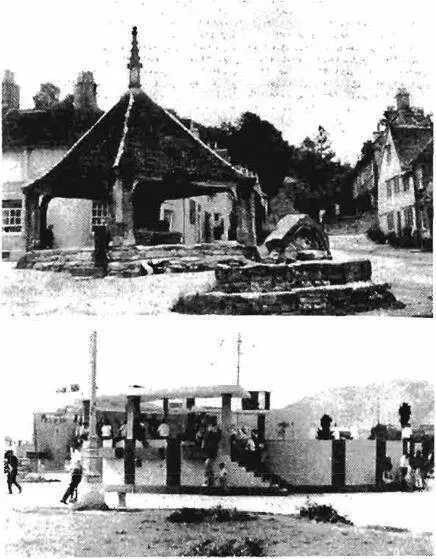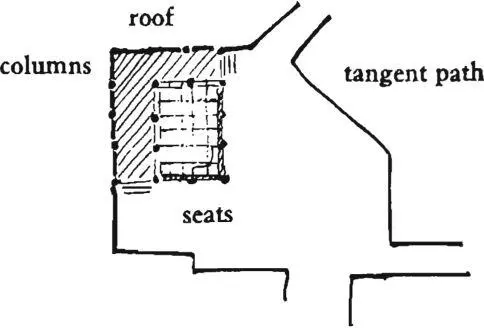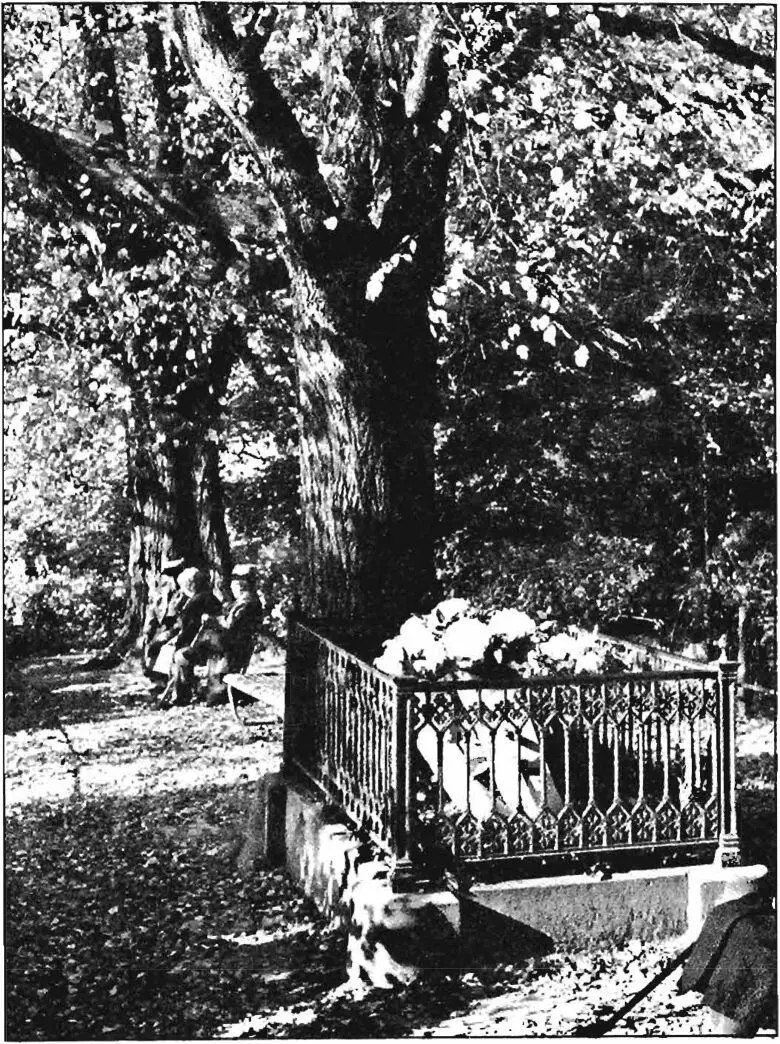Christopher alexander - A pattern language
Здесь есть возможность читать онлайн «Christopher alexander - A pattern language» весь текст электронной книги совершенно бесплатно (целиком полную версию без сокращений). В некоторых случаях можно слушать аудио, скачать через торрент в формате fb2 и присутствует краткое содержание. Жанр: Прочая научная литература, на английском языке. Описание произведения, (предисловие) а так же отзывы посетителей доступны на портале библиотеки ЛибКат.
- Название:A pattern language
- Автор:
- Жанр:
- Год:неизвестен
- ISBN:нет данных
- Рейтинг книги:3 / 5. Голосов: 1
-
Избранное:Добавить в избранное
- Отзывы:
-
Ваша оценка:
- 60
- 1
- 2
- 3
- 4
- 5
A pattern language: краткое содержание, описание и аннотация
Предлагаем к чтению аннотацию, описание, краткое содержание или предисловие (зависит от того, что написал сам автор книги «A pattern language»). Если вы не нашли необходимую информацию о книге — напишите в комментариях, мы постараемся отыскать её.
A pattern language — читать онлайн бесплатно полную книгу (весь текст) целиком
Ниже представлен текст книги, разбитый по страницам. Система сохранения места последней прочитанной страницы, позволяет с удобством читать онлайн бесплатно книгу «A pattern language», без необходимости каждый раз заново искать на чём Вы остановились. Поставьте закладку, и сможете в любой момент перейти на страницу, на которой закончили чтение.
Интервал:
Закладка:
*cc*wnvm j 'pp^TEa^r yuv 70 £ern*JE> ays me
Public outdoor room built by Chafin and Gordon in
Cleveland , Ohio.
69 PUBLIC OUTDOOR ROOM
door rooms on the grounds and on the public land surrounding a local mental health clinic. According to staff reports, these places changed the life of the clinic dramatically: many more people than had been usual were drawn into the outdoors, public talk was more animated, outdoor space that had always been dominated by automobiles suddenly became human and the cars had to inch along.
In all, Chapin and Gordon and their crew built seven public outdoor rooms in the neighborhood. Each one was slightly different, varying according to views, orientation, size.
We have also discovered a version of this pattern from medieval society. Apparently, in the twelfth and thirteenth centuries there were many such public structures dotted through the towns. They were the scene of auctions, open-air meetings, and market fairs. They are very much in the spirit of the places we are proposing for neighborhoods and work communities.
 |
| Outdoor rooms in England and Peru. |
Therefore:
In every neighborhood and work community, make a
TOWNS
piece of the common land into an outdoor room—a partly enclosed place, with some roof, columns, without walls, perhaps with a trellis; place it beside an important path and within view of many homes and workshops.

♦£* •£•
Place the outdoor room where several paths are tangent to it, like any other common area—common areas at the heart (129); in the bulge of a path—path shape (121); or around a square—activity pockets (124); use surrounding building edges (160) to define part of it; build it like any smaller outdoor room, with columns, and half-trellised roofs—outdoor room (163); perhaps put an open courtyard next to it—courtyards which live (115), an arcade (119) around the edge, or other simple cover—canvas roofs (244), and seats for casual sitting—
STAIR SEATS ( I 25), SEAT SPOTS (241). . . .
| 70 GRAVE SITES* |
|---|
 |
353
. . . according to life cycle (26) the transitions of a person’s life must be available and visible in every community. Death is no exception. This pattern helps to integrate the fact of death with the public spaces of each neighborhood, and, by its very existence, helps to form identifiable neighborhoods (14), and HOLY GROUND (66) and COMMON LAND (67).
No people who turn their backs on death can be alive. The presence of the dead among the living will be a daily fact in any society which encourages its people to live.
Huge cemeteries on the outskirts of cities, or in places no one ever visits, impersonal funeral rites, taboos which hide the fact of death from children, all conspire to keep the fact of death away from us, the living. If you live in a modern suburb, ask yourself how comfortable you would be if your house were next to a graveyard. Very likely the thought frightens you. But this is only because we are no longer used to it. We shall be healthy, when graves of friends and family, and memorials to the people of the recent and the distant past, are intermingled with our houses, in small grave yards, as naturally as winter always comes before the spring.
In every culture there is some form of intense ceremony surrounding death, grieving for the dead, and disposal of the body. There are thousands of variations, but the point is always to give the community of friends left alive the chance to reconcile themselves to the facts of death: the emptiness, the loss; their own transience.
These ceremonies bring people into contact with the experience of mortality, and in this way, they bring us closer to the facts of life, as well as death. When these experiences are integrated with the environment and each person’s life, we are able to live through them fully and go on. But when circumstances or custom prevent us from making contact with the experience of mortality, and living with it, we are left depressed, diminished,
354
70 GRAVE SITES
less alive. There is a great deal of clinical evidence to support this notion.
In one documented case, a young boy lost his grandmother; the people around him told him that she had merely “gone away” to “protect his feelings.” The boy was uneasily aware that something had happened, but in this atmosphere of secrecy, could not know it for what it was and could not therefore experience it fully. Instead of being protected, he became a victim of a massive neurosis, which was only cured, many years later, when he finally recognized, and lived through the fact of his grandmother’s death.
This case, and others which make it abundantly clear that a person must live through the death of those he loves as fully as possible, in order to remain emotionally healthy, have been described by Eric Lindemann. We have lost the crucial reference for this work, but two other papers by Lindemann converge on the same point: “Symptomatology and Management of Acute Grief,” American Journal of Psychiatry , 1944, 101, 141-48; and “A Study of Grief: Emotional Responses to Suicide,” Pastoral Psychology , 1953, 4(39), 9—13. We also recommend a recent paper by Robert Kastenbaum, on the ways in which children explore their mortality: “The Kingdom Where Nobody Dies,” Saturday Review , January 1973, pp. 33—38.
 |
| A concrete honeycomb graveyard in Colma , California. The suferintendant of the cemetery said, “Families will never see the sinking . . . which so distressed them in older farts of the cemetery. . . .” |
In the big industrial cities, during the past 100 years, the ceremonies of death and their functional power for the living have
CHOOSING A LANGUAGE FOR YOUR SUBJECT
more relevant for you. In this case, you will get the most “power” over the language, and make it your own most effectively, if you write the changes in, at the appropriate places in the book. And, it will be most concrete of all, if you change the name of the pattern too—so that it captures your own changes clearly.
•J#
Suppose now that you have a language for your project. The way to use the language depends very much on its scale. Patterns dealing with towns can only be implemented gradually, by grass roots action- patterns for a building can be built up in your mind, and marked out on the ground; patterns for construction must be built physically, on the site. For this reason we have given three separate instructions, for these three different scales. For towns, see page 3; for buildings, see page 463; for construction, see page 935.
Читать дальшеИнтервал:
Закладка:
Похожие книги на «A pattern language»
Представляем Вашему вниманию похожие книги на «A pattern language» списком для выбора. Мы отобрали схожую по названию и смыслу литературу в надежде предоставить читателям больше вариантов отыскать новые, интересные, ещё непрочитанные произведения.
Обсуждение, отзывы о книге «A pattern language» и просто собственные мнения читателей. Оставьте ваши комментарии, напишите, что Вы думаете о произведении, его смысле или главных героях. Укажите что конкретно понравилось, а что нет, и почему Вы так считаете.












